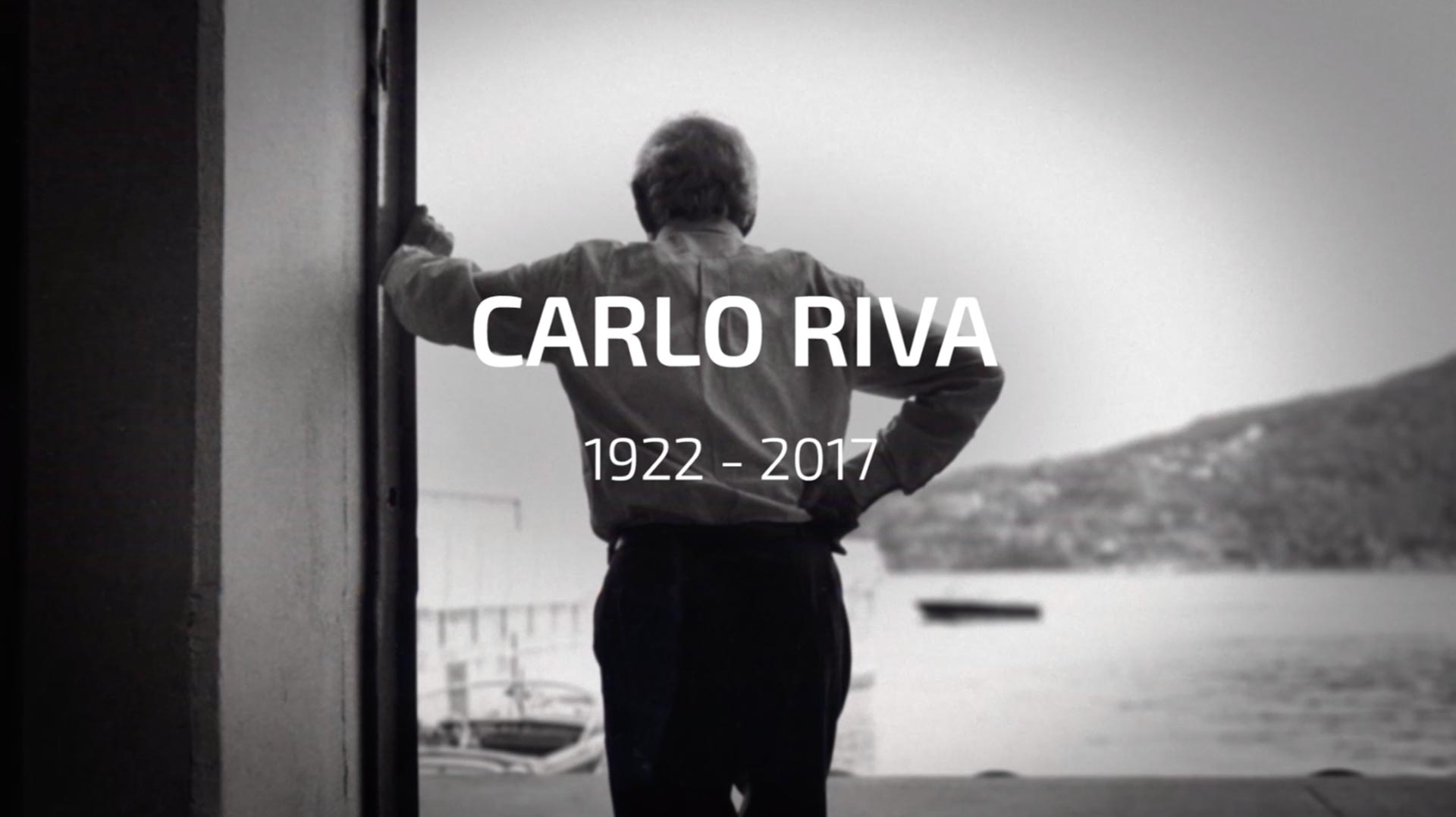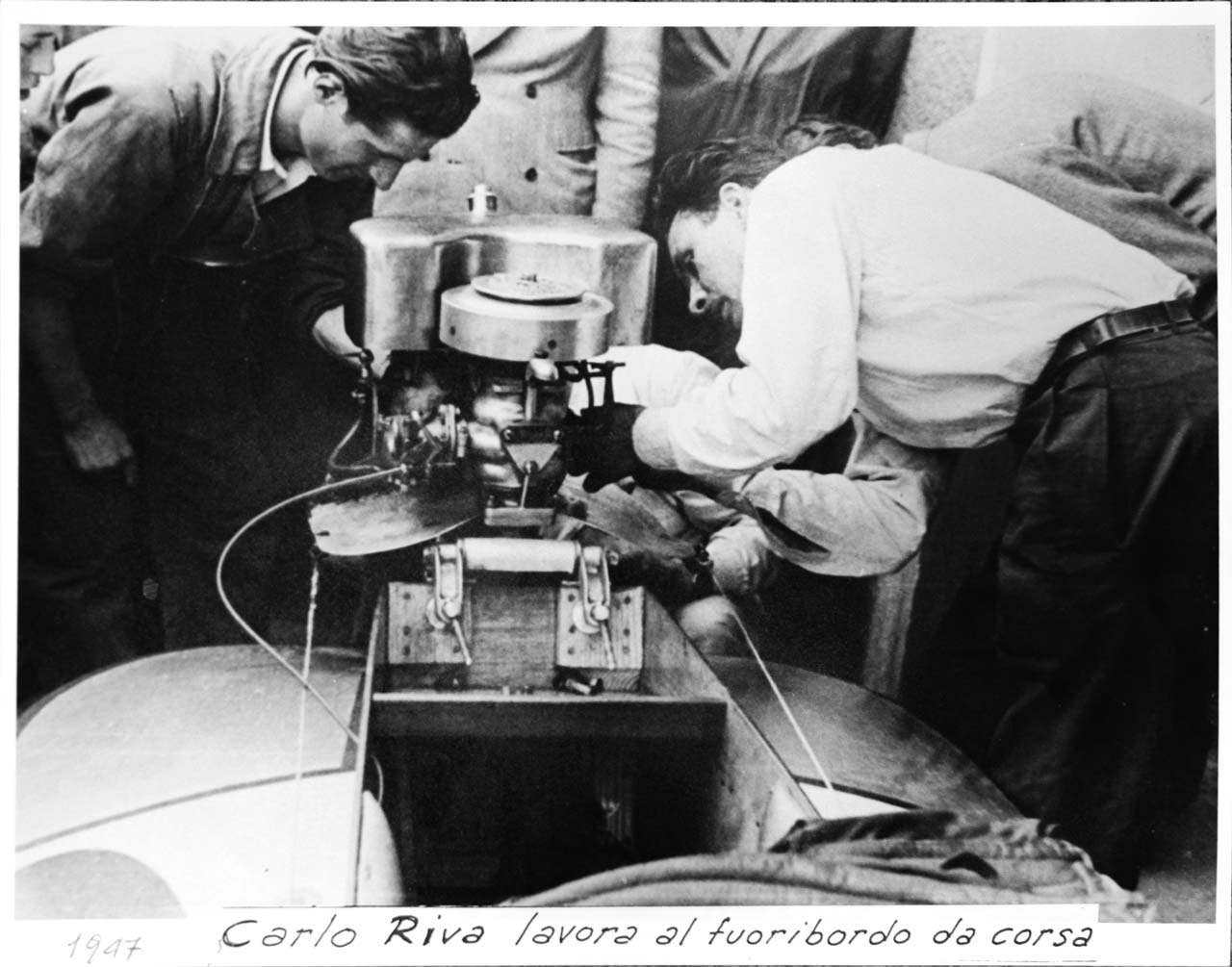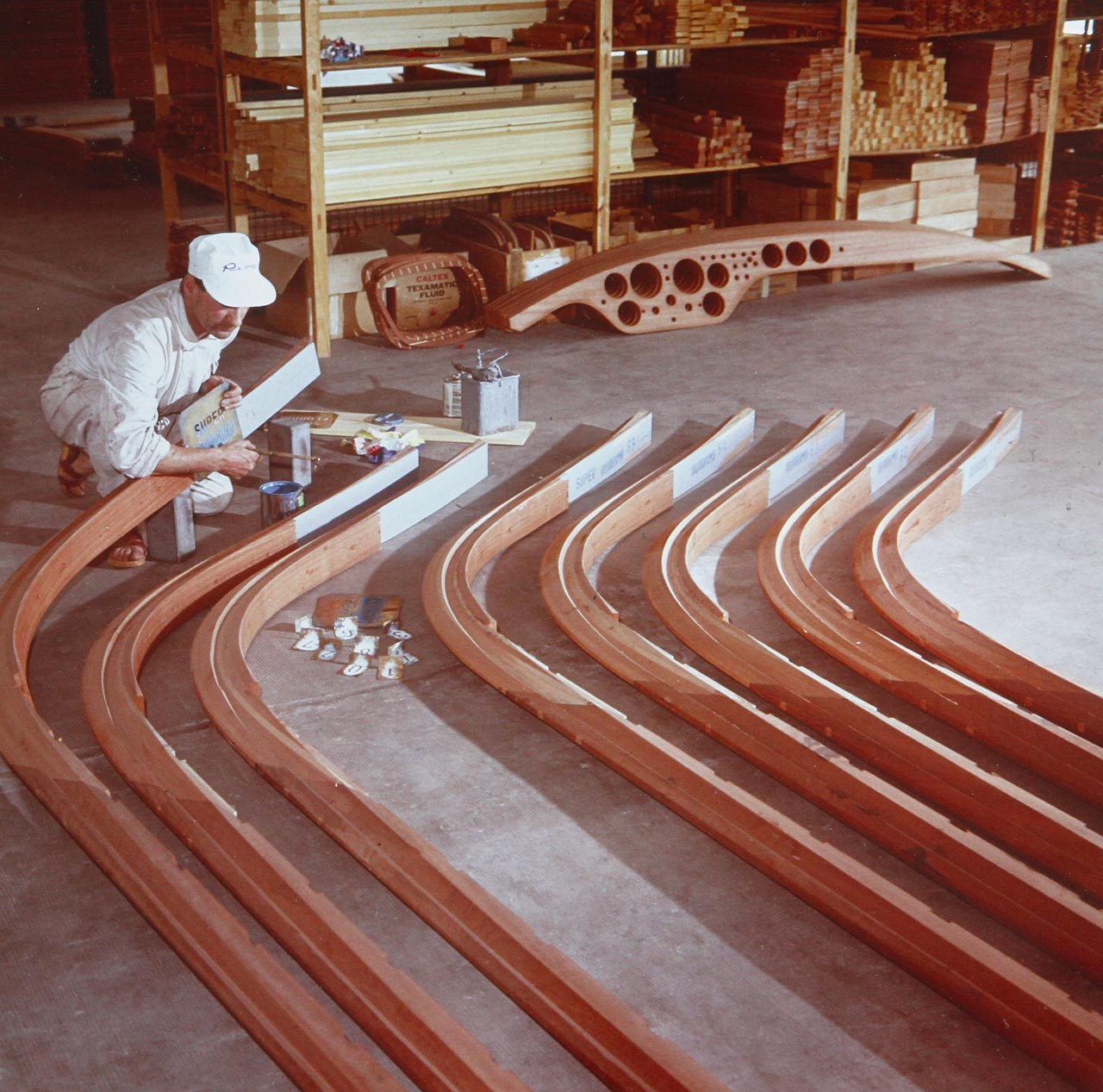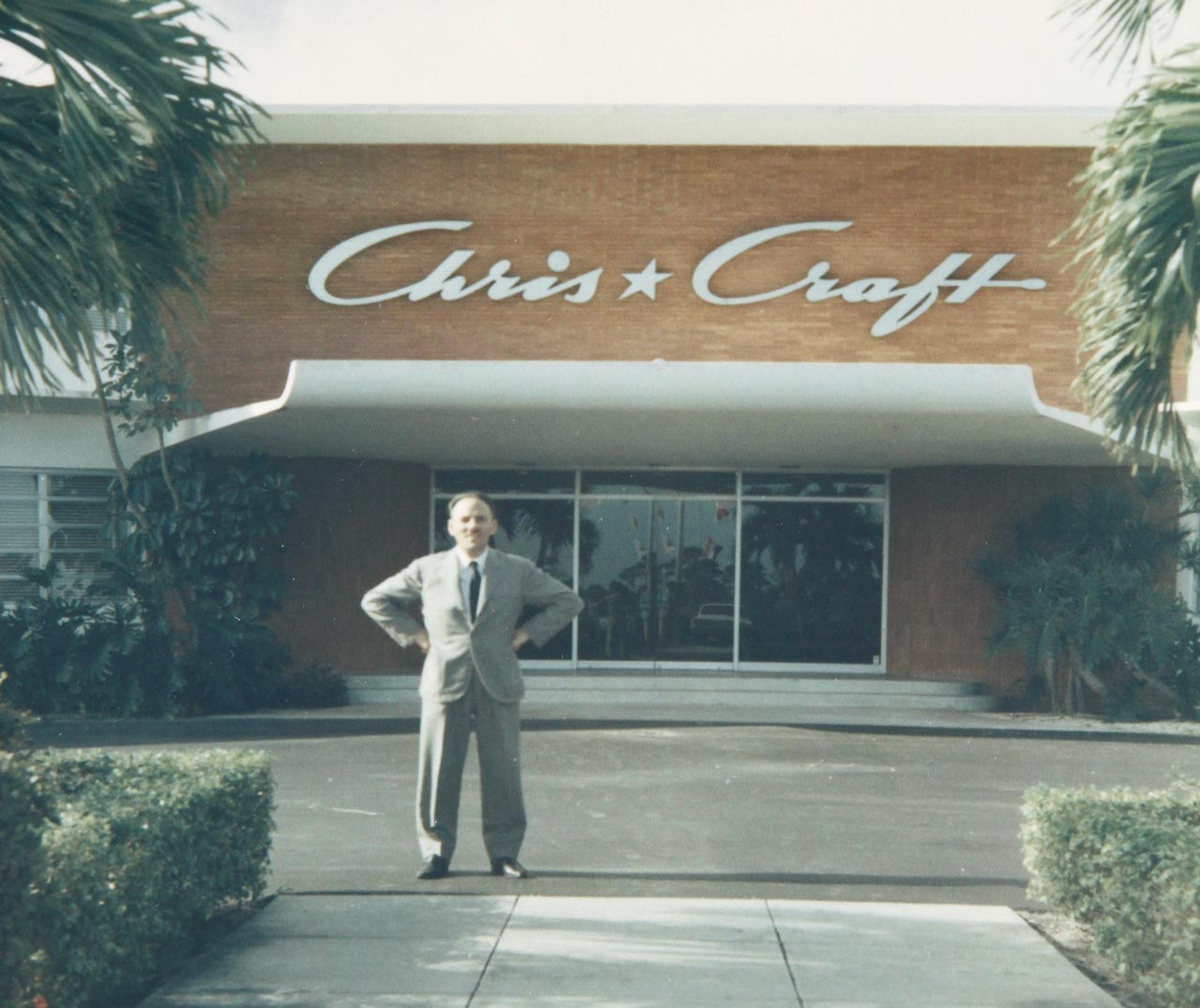Carlo Riva
Photo Archive Carlo Riva ©
Carlo Riva was born in Sarnico on 24 February 1922. He was a child of art because his great-grandfather Pietro was a shipwright who in 1842 migrated to Sarnico on Lake Iseo. His ability to repair and build wooden boats have been transmitted to his son Ernesto and by him to Serafino, a great enthusiast of motor boating. In the 20s and 30s the Riva inboard and outboard boats have written glorious pages: champions and brands occupied the sports covers of the world press. By breathing the thrilling atmosphere of racing, Carlo remained influenced and became increasingly passionate about boating. An experience that awoken his fervent imagination as a boy and fed his passion for shipbuilding. At the age of 16 he redesigned and improved the “BRUNELLA” racing hull with which the pilot Paolo Mora won the Tremezzo race in 1932.
Already in those years, the "impatient apprentice" is caressed by the idea of building pleasure boats in series, but with an artisanal style based on the American model. In 1939, at the age of 17, he designed the special hull of six motorboats on behalf of the Italian East African Government, destined to the shallow waters of the Ethiopian Ashenge and Tana lakes. However, the interlude of the war restrained and froze Carlo's dreams, ready to reignite at the first opportunity.
Basically I was born on a boat. At the age of three I had fun with a rowing boat, at the age of seven I was already familiar with the engines, bringing around my little sister Dafne. At ten years my duty was to clean up the boats of my father Serafino. Sometimes I ran away to go on the swing, but my father scolded me because my place was in the shipyard. As a kid I started designing racing boats and having ideas to innovate the shipyard.
The racing world
Like my father Serafino, I loved as well the exciting world of racing. With youthful enthusiasm, at the age of 17, I began designing competition hulls for some Italian motorboat pioneers. The dazzling victories of audacious drivers like Guerini, Sestini, Alquati, Mora, Pagliano, and many others - already in the far 1930s brought the name of the small shipyard of Sarnico to the stars.
The birth of the Riva shipyard in Sarnico
It was 1950 when the rudder of the shipyard passed into the hands of Carlo Riva. On October 3, 1954 the new large Riva Shipyard was inaugurated, the one that still bears the signs of its unmistakable style, of its sensitivity for shapes and colors, of its rational organization of spaces, functional for working in series on an artisanal base. Here were born the 4,098 mythical mahogany boats that have been able to outperform a prestigious brand such as the American one of Chris Craft. From now on, the new "must" is Riva.
Those that follows are years of feverish and tireless work. Anticipating the needs of Riva’s shipowners, within a few years of each other, were born Riva Boat Services for technical assistance and sales: the historic "R.A.M." of Sarnico, born in 1957, two years after the prestigious "Monaco Boat Service" of Monte-Carlo, which has exceeded more than half of a century, and later other offices spread worldwide. In parallel, Carlo invested in brand image and advertising with catalogues of which he personally took care of every detail because Riva means class, lifestyle, and everything must be at the top. He worked with the great photographer Federico Patellani to take care of the printing of the refined and exclusive Riva catalogue of 1956. He never missed an opportunity to take part at fairs and boat shows in Italy, in Europe and in America. He has always been a pioneer, indeed in 1952 at the motorboat show of Mello Prina in via Durini in Milan he exhibited a “Sebino” next to the cars surprising all the people. He created the same astonishment when he took part at the Miami Boat Show in 1959 with a Triton, a Super Florida and an Ariston or when he opened a Riva showroom in the Rockfeller Center of Manhattan in 1964.
But the "nautical pioneer" invested in the research of innovative materials, such as marine plywood, a technological invention that changed the history of boat’s construction, thanks to the collaboration of Remo Lodi, a great technician of Incisa of Lissone. Research method that is applied to all parts of the hull to achieve quality, durability and safety: from chrome plating to varnishes, upholstery, engines, screws, on-board instruments, each of which has its own interesting story, thanks to the design by Carlo Riva.
The engineer is also a forerunner of fiberglass. At the end of the 1960s, thanks to his far-sighted intuition, he understood that the new material was becoming popular in the nautical world. He directly faced the problem, giving shape, harmony and balance to the fiberglass. The first two models in fiberglass (1970-1971) with Bertram hull, the 20 ’Bahia Mar and the 25’ Sport Fisherman, 150 boats built and sold in less than two years, have the indelible signature of the engineer Carlo Riva.
I'll build boats my own way
I want to build boats my own way” I told my father, he was a conservative and I have to thank him for teaching me and transmitting me his passion for work. But I had a clear vision of how I wanted to manage production. I started in 1950 with six months of testing, I had to settle with what I had screws, paint and a bit of wood, it was the best day of my life.
The mahoganies D.O.C. of the reserve of Carlo Riva
Noble woods, with a silky appearance and unmistakable veins, resistant to use and weather conditions. Precious exotic essences that I personally selected in a maniacal way: Kaya Ivorensis, Sipo, Makore, Grand Bassam, Okumè, Iroko, Philippin Mahogany. But the most beautiful of all woods, for appearance, color and ductility and non-deformability is the Honduras cedar, particularly suitable for bridges, dashboards, and some interior finishes. Their fragrance spread in the air creating a pleasant sensation and a sort of revered respect to whom modeled them.
"It is still alive the memory of those fragrances that perfumed the shipyard” recall Lia and Pia
From Chris-Craft engines to Riva engines
“A fascinating story that began in 1952 with the first overseas trip to the Chris-Craft headquarters in Algognac, Michigan. I didn’t have enough money to import as many engines as Americans wanted. I invented a lie about Italian protectionism. At the end I signed to import six at a time, but for a total of 50. I came back with three things in my pocket, the passport, the plane ticket and three dollars.
Three years later we bought over a thousand engines. But I needed a higher quality, so in spite of myself, I left my friends at Algognac to enter to Chrysler’s house. We bought 600 engines, subordinating the contract to a series of modifications, in particular relating to marinization. But who made all the changes I wanted was Warren's Crusader Marine in Michigan in the person of the owner Mr. Calvin Connel. Have been made about a hundred changes, but at the end the lightest, most durable, quietest and most reliable Riva’s engines were born. They became the best available on the market.”
The Riva Boat Services
Sale, storage, maintenance, Riva needed assistance facilities, we built fourteen. It was easier than today. Less authorizations were needed, was enough buying the land, building a shipyard and an office and having trusted people. These people often didn’t have the financial resources and the best later on became themselves owners of Boat Service.






















